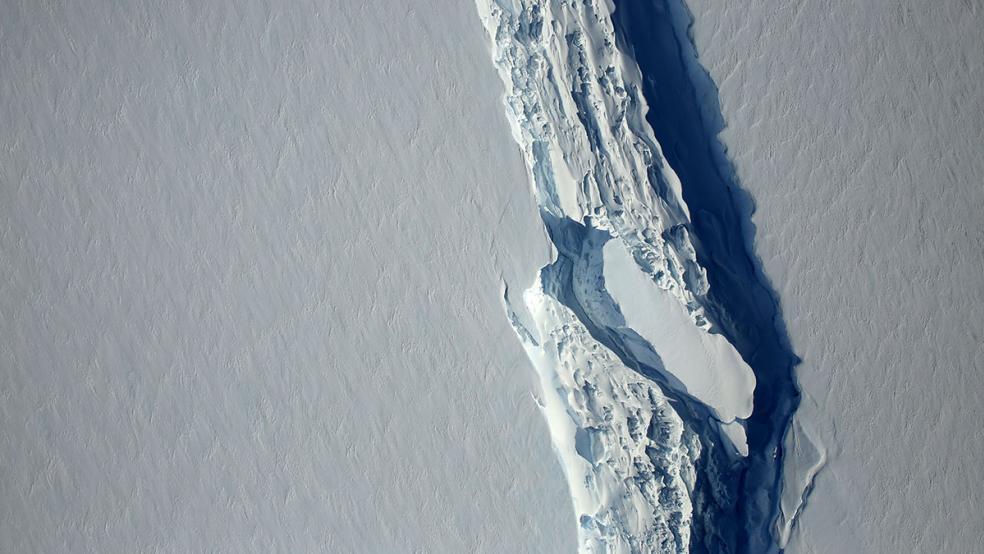At about the same time President Trump announced last month that he was taking the U.S. out of the Paris climate change accord, a vast expanse of ice roughly the size of Delaware was threatening to break away from an Antarctic ice shelf in yet another sign of global warming.
Scientists who have seen two other sections of the Larsen ice shelf break away and dissolve into the ocean during the past dozen years amid rising global temperatures are intently watching a serious crack in the Larsen C ice shelf -- one that has dramatically grown in the past few months.
Related: Trump Pulls Out of the Paris Climate Deal: How Much Damage Could It Do?
When the ice mass finally “calves” or breaks away, it will trigger an environmental chain reaction that will be gradual but almost certainly devastating.
The all-but-certain breach is certain to destabilize further the remaining 20,000 square mile ice mass anchored to land and accelerate what many scientists believe is a dangerous rise in sea level that could contribute to flooding as far away as Miami Beach and Louisiana.
If the flooding continues unabated, scientists warn, many coastal communities in the U.S. and elsewhere could literally disappear, millions of people would be displaced, and naval and military installations around the world vital to U.S. interests could face serious damage or destruction.
“Frankly, the consequences could be dire - but we don't know exactly,” John Abraham, a professor of thermal sciences at the University of St. Thomas in St. Paul, Minnesota, said in a recent interview with the German publication DW. “These ice shelves stabilize the ice sheets - but when they break off, they can create an unstable situation. What scientists really want to know is what will happen after this portion of the ice shelf breaks off.”
Moreover, he said, Trump’s decision to pull out of the 2015 international climate change agreement and cut environmental budgets will thwart future research around global warming.
“The Trump administration wants to dramatically cut our expenditures into climate research,” he said. “That is: Remove the eyes and ears of scientists, so we won't know what's happening in places like the Larsen C ice shelf. And that would really be devastating to our understanding of climate change.”
Related: Here’s Who Wins As Trump Exists The Paris Accord
While most climate scientists, including members of the National Academies of Science, have concluded that human-generated global warming has driven up sea levels in the 21st century, some skeptics have challenged that conclusion, believing global warming to be cyclical. What’s more, while 76 percent of Americans believe that it is “very likely” or “fairly likely” that rising sea levels are due to climate change, 23 percent of Americans say that’s not likely or don’t believe it, according to a survey last year by the Pew Center on Research.
Larsen C is a major ice shelf located on the Antarctic Peninsula, extending out over the ocean. Larsen A, one of the smaller ice shelves, broke away and disintegrated in 1995, followed by the demise Of Larsen B, which disintegrated in 2002 over just a matter of weeks.
Scientists have closely monitored a rift in Larsen C that has grown during the past few years that is carving out a 1,930-square mile section of floating ice. The speed of the breakup has increased substantially in recent months, and an outright split is considered imminent.
Related: Delaware-Sized Iceberg on Verge of Split From Antarctic Shelf
DW says scientists know the ocean levels are currently rising a few millimeters every year but are seeing ocean levels rising at an accelerated clip. “If you ask oceanographers what the oceans will be like by 2100, the general view is that it's going to be 1 meter [3 feet and 3 inches] higher than it is today,” the news organization reported.





